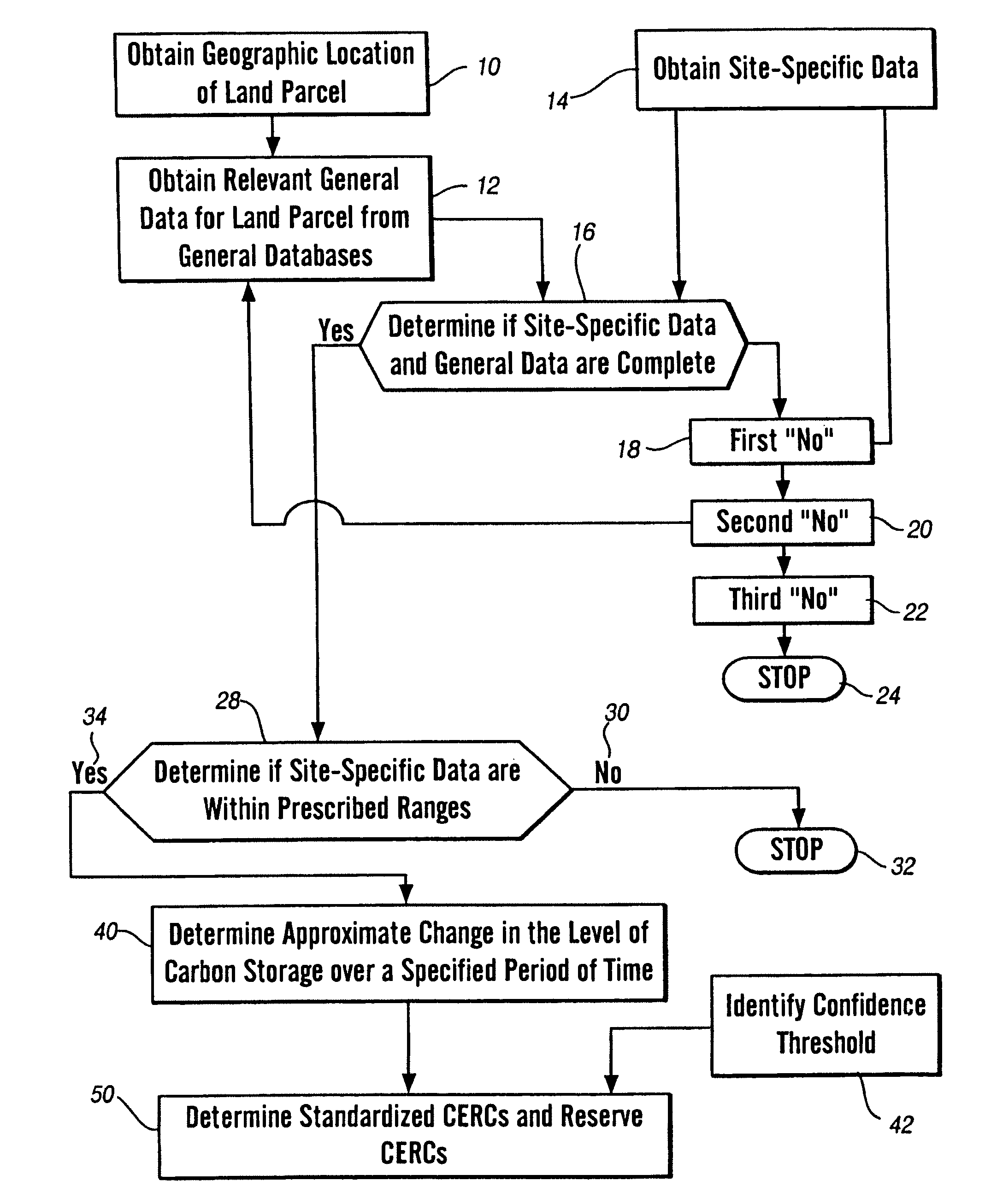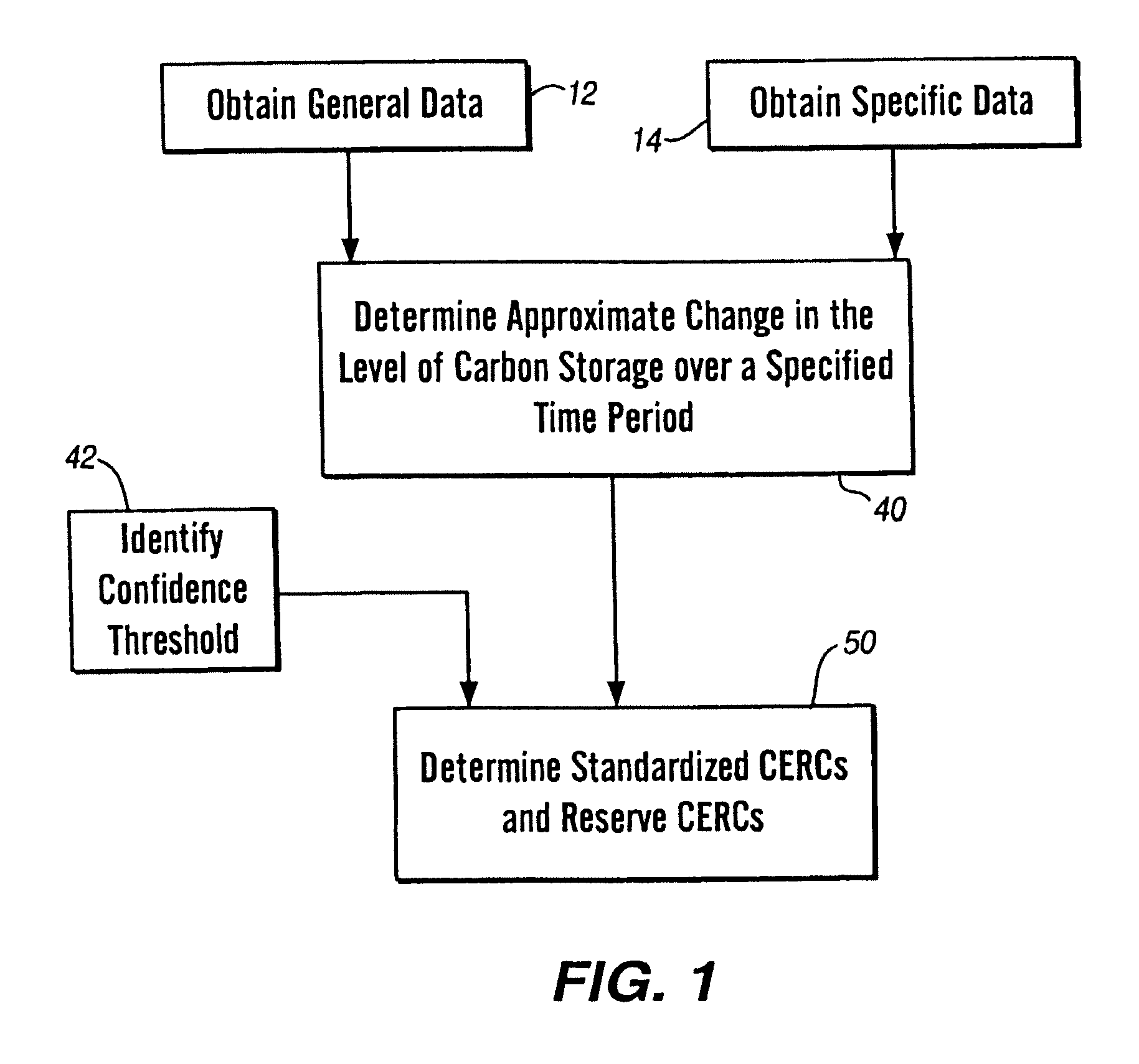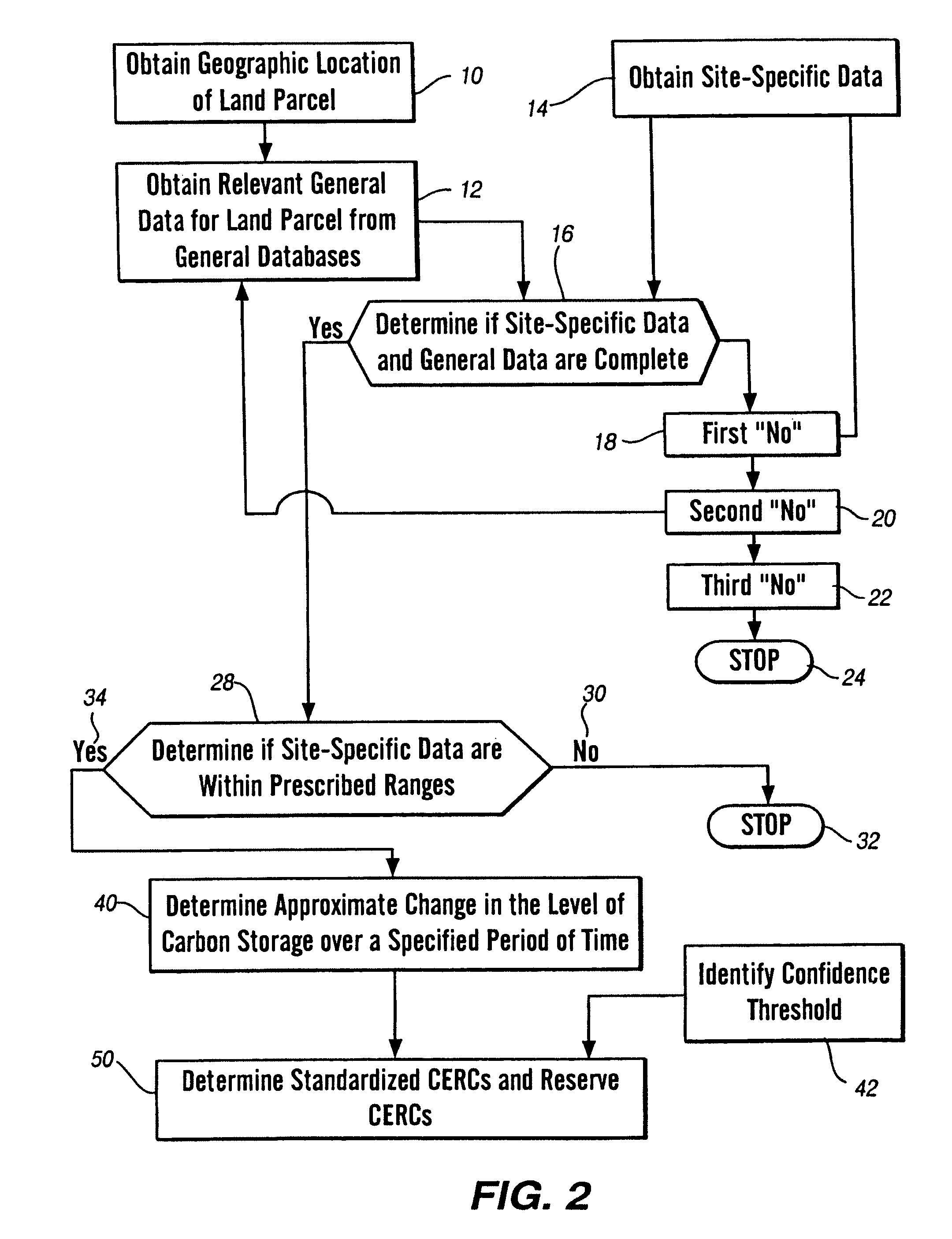Techniques for minimizing nitrous oxide emissions and increasing certainty in generating, quantifying and verifying standardized environmental attributes relating to nitrous oxide
- Summary
- Abstract
- Description
- Claims
- Application Information
AI Technical Summary
Benefits of technology
Problems solved by technology
Method used
Image
Examples
example a
[0143]Atrizine is a herbicide that has been demonstrated to be mobile, persistent, and to adversely affect the environment. A module to a CERC System infrastructure can be used to collect information from producers so that they can certify that they did not use atrizine to produce the current crop. This documented, quantified attribute can then be bundled with the commodity to its point of use. However, isolating and tracking commodities such as grain from producer to market is extremely expensive and often impossible. Since atrizine is not physically present in the commodity that is to be sold, the attribute can be separated in the form of a premium, or “green tag,” for atrazine-free grain. The green-tag can then be marketed to clean-water stakeholders in a similar way as “green tags” for energy are sold to electricity consumers. Alternatively, the value of the eco-tag can be normalized through the use of an economic model to estimate remediation costs. This will allow mixing of va...
example b
[0144]The CERC System to certify carbon sequestration can also be expanded to evaluate whole-farm energy usage, resulting in the production of various eco-tags, such as “carbon neutral” crop tags. Such carbon-neutral tags can then be marketed to stakeholders, or alternatively be quantified, disaggregated from the commodity, normalized and mixed with “atrizine-free” or other eco-tags and re-attached to the commodity at the market place.
example c
[0145]A farmer can utilize an Internet interface, preferably an interface as described above for a CERC system, to identify a specific land parcel. The producer can then request an analysis of erosion potential. Based on the information in the underlying GIS system (also preferably used to quantify carbon sequestration), numerical models can be used to design and place buffer strips in appropriate places to minimize the production of sediment. The farmer is delivered a map, preferably over the internet, upon which a system of buffer strips designed to meet a specified level of sediment reduction have been drawn, preferably by an automated computer system. Buffer strips that cover only about five percent of the land area typically can reduce sediment production by 50%. The farmer can then plant the required buffer strip and a designated time period later, such as two years, the CERC System can be used to verify buffer placement, such as by satellite imagery. If appropriate, the farme...
PUM
 Login to View More
Login to View More Abstract
Description
Claims
Application Information
 Login to View More
Login to View More - R&D
- Intellectual Property
- Life Sciences
- Materials
- Tech Scout
- Unparalleled Data Quality
- Higher Quality Content
- 60% Fewer Hallucinations
Browse by: Latest US Patents, China's latest patents, Technical Efficacy Thesaurus, Application Domain, Technology Topic, Popular Technical Reports.
© 2025 PatSnap. All rights reserved.Legal|Privacy policy|Modern Slavery Act Transparency Statement|Sitemap|About US| Contact US: help@patsnap.com



